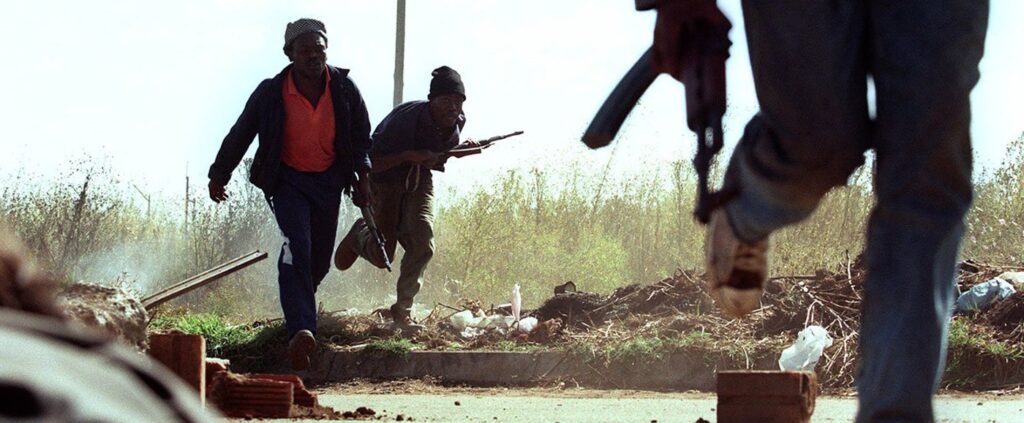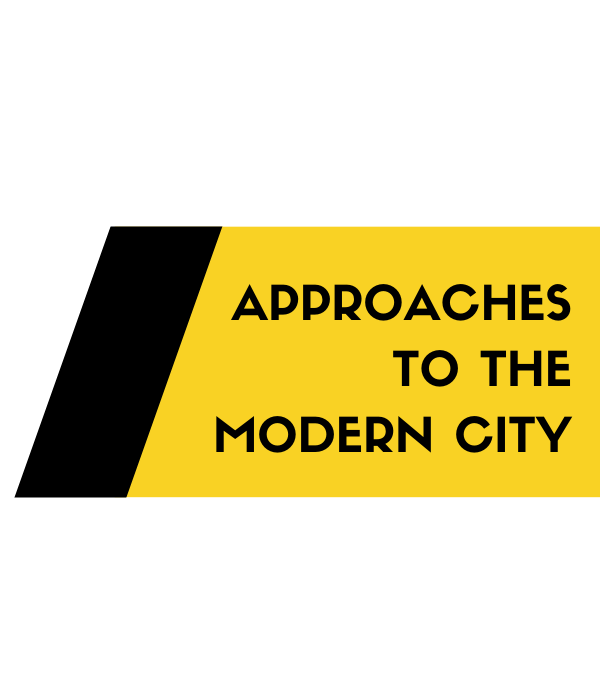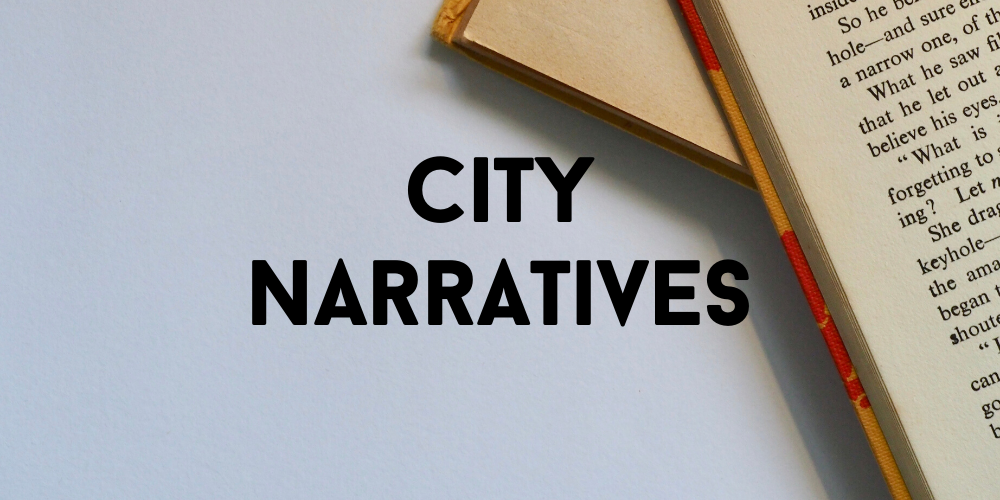By Jane Hutton
Questions
How does Trevor Noah’s memoir Born a Crime depict life in Johannesburg during the immediate aftermath of apartheid, the process of democratization, and the early years of democracy? What do we learn from Noah’s experiences that we wouldn’t be able to get from other sources?
Discussion
When it was clear that the National Party’s rule was crumbling, South Africa suddenly faced the task of trying to dismantle the social, political, and economic inequality that had been robustly institutionalized over four decades of apartheid and several centuries of colonization. Given the long history and systematization of white minority rule in South Africa, this undertaking obviously could not be completed in a year. The result was a unique epoch of transition, starting from the beginning of negotiations between the National Party apartheid regime and the African National Congress in 1990, followed in 1994 by the first general election with universal adult suffrage regardless of race, and into the early years of democratic rule. South African comedian Trevor Noah grew up during this period of democratization, an experience that he recounts, often comically, in his memoir, Born a Crime.

The cover of Noah’s memoir.
Perhaps the biggest question of post-apartheid South Africa was determining which party would assume power in the absence of the National Party, which had been ruling since 1924. Noah notes that the transition to democracy is sometimes called the Bloodless Revolution. This moniker stems from the fact that there were few white casualties, but it ignores the deaths of black South Africans (Noah 2019, 12). By one count, there were over 20,000 deaths caused by political violence in the last decade of apartheid from 1985 to 1995. Kaufman argues this was not a result of random violence as is often claimed (Kaufman 2017, 502). Instead, he states that what occurred was a South African civil war with clearly identifiable military strategies, campaigns, victories, and defeats. According to Kaufman, different aspects of the war could be more specifically classified: as an ‘ethnic conflict’ if the focus is the violence between the predominantly-Zulu Inkatha Freedom Party and the predominantly-Xhosa African National Congress, as a ‘revolutionary’ or ‘people’s war’ with the underlying political goal to unseat the apartheid government, as an ‘insurgency’ or ‘unconventional war’ looking at the type of military strategy used (Kaufman 2017, 503). Whichever definition, South Africa’s road to democracy was not “bloodless,” as some have claimed. It was characterized by a great deal of violence, particularly for black South Africans.

Photo from an Inkatha-ANC clash.
In the first chapter of his memoir, Noah tells of his memories of this violence, which he saw in his own neighborhood. The epicenters of the violence were in KwaZulu-Natal province as well as Gauteng province, where Johannesburg is located. Most of the conflict Noah recounts pertains to the ethnic tensions between the Zulu and the Xhosa. At the time, Noah lived with his mother in Eden Park, close to Thokoza and Katlehong townships, where some of the worst Inkatha-ANC clashes occurred. He tells of walking to school once and seeing the charred body of someone who had been covered in gasoline and burned alive (Noah 2019, 12). While his neighbors would wait out the riots in their homes, Noah’s strong-minded mother would brave the crowd with resolve not to let it get in the way of her life and the things she had to do (Noah 2019, 13). He was five years old when Nelson Mandela was freed from prison in 1990 and remembers the violence that started in the wake of the repeal of apartheid legislation in 1991. This violence continued for years, all the way until the 1994 elections. When Noah was nine, his mother pushed him out of a moving car to save them from getting murdered by the Zulu minibus drivers that were taking them home. Noah’s mother, a Xhosa, argued with the driver, who continued to spew insults at her until finally threatening her and refusing to let her get off. Noah didn’t fully grasp the weight of the situation in the moment, but his mother did and pushed her son out of the car when it slowed, jumping out behind him while holding her infant son, Andrew (Noah 2019, 16).
According to Noah, what really set off the driver’s anger was hearing his mother speak Xhosa. Language is one of the themes Noah focuses on throughout the memoir in both historical and personal ways. He explains that the architects of apartheid used language to divide the black majority in order to rule them more effectively. Under apartheid, children were educated in their home languages, fabricating yet another degree of separation between different ethnicities in an effort to pit them against one another instead of against their overlords (Noah 2019, 49). In contrast, Noah is a polyglot and learned several different South African languages, in addition to English, Afrikaans, and German. Noah learned from his mother’s deft use of language to change others’ perceptions of him.

A young Noah with his mother, Patricia.
Noah is of mixed race, which at the time of his birth was illegal and punishable by multiple years in prison. His mother is Xhosa and was classified as ‘black’ under apartheid. His father is Swiss/German and was classified as ‘white.’ His lighter complexion made others think he was of the ‘coloured’ racial category for those that were neither ‘white’ nor ‘black,’ often including the descendants of the Dutch colonizers’ children with the native Africans from the time before interracial relationships were illegal. However, Noah did not belong culturally to the ‘coloured’ category and could not legally, either, without resulting in his mother’s arrest. If the police knew he was her son, it would be incriminating evidence of an illegal, interracial relationship. When he was a toddler and apartheid was still in place, Noah remembers walking in public with his mother’s friend, who was classified as ‘coloured,’ while his mom walked behind them pretending to be their maid (Noah 2019, 28). When Noah was at his grandmother’s house in Soweto, he was not allowed to play outside for risk that the police would take him away (Noah 2019, 29). He grew up around the black community of Johannesburg, was raised by his black family, and therefore identifies more as black. But when he was young, black children in the township of Soweto, who had never seen a white person up close, saw Noah as white. Even his own maternal grandparents considered him white to an extent and gave Noah special treatment because of it (Noah 2019, 52).
As someone who defied easy categorization according to the rules of apartheid, the tool of language was particularly useful for Noah in building bridges with those who were different from him. Noah’s experiences with language were by no means the standard, but they reveal a great deal about life in Johannesburg during this time. Racial and ethnic divisions were so clearly defined but also so baseless that Noah avoided being mugged by speaking to his almost-attackers in Zulu (Noah 2019, 56-57). Once they perceived him as one of them, they laughed, apologized, and went on their way, completely forgetting their plan to mug him a minute before. This experience illustrates the flaws of the apartheid racial categorization by showing the mutability of divisions that appear rigid on official documents.
Language is just one of the weapons apartheid used against black South Africans. One of the most important ones was the spatial segregation outlined in the Group Areas Act of 1950. Certain neighborhoods of Johannesburg were designated for the different racial groups, with the black population confined to townships far from the city center that received few services from the government (Beall 2000, 114). Facing increased international criticism, South Africa loosened some apartheid controls like the spatial restrictions, resulting in an increased number of black South Africans moving to the city center of Johannesburg starting in the late 1980s (Turok 1994, 250). Despite this, as Turok discusses, the government’s cementing of apartheid legislation by way of Johannesburg’s city planning did not go away after apartheid. It was constructed into the built environment itself. The city government still spent seven to ten times more on services in white areas than it did on black areas in 1992 and 1993, after apartheid legislation had been officially repealed (Turok 1994, 252). Nowadays, former ‘black’-only townships are showing signs of upward mobility with the development of middle-class neighborhoods, especially in Soweto (Beall et al 2000, 117).
Since Noah’s family was classified as ‘black,’ these were often the neighborhoods where he spent the bulk of his time. Although the spatial restrictions were officially repealed for most of Noah’s childhood, his personal experiences in the various neighborhoods of Johannesburg show their lasting legacy. Noah and his mother lived in the city center during the period when it was becoming more diverse. Noah’s mother, however, had been living there before it was legal, just one of many examples of her not letting apartheid get in her way. Since his grandmother lived in Soweto, he has an insider’s view of the township, despite appearing to be an outsider because of his skin-tone. Noah explains that while residents of Soweto were so poor that they had to buy their bread in small portions and their eggs individually, as opposed to buying a whole loaf or dozen, they also all had driveways on their properties in the hopes that they would one day be able to afford a car (Noah 2019, 41-42). Even though the government failed to provide adequate services to more than a million people that lived in Soweto, residents made do by developing a black-market economy and illegal businesses that served the community from people’s homes (Noah 2019, 41). There were no paved roads, minimal electricity, and inadequate sewage, yet there was a system to the chaos. As Steinberg discusses, the police under the apartheid government were not there to serve the black people of South Africa, but to keep them pacified (Steinberg 2014, 183). As a result, an internal legal code developed in the townships by which the community dealt with crimes from robbery to rape (Noah 2019, 219). The lack of government support led to a degree of self-determination within the townships, none of which would be recorded in detail by official records because it was all informal and unauthorized.
In summary, Noah’s memoir is a story of hope and of taking what you’ve been given, no matter how small, and making something of it. Where academic sources show the factual conditions of deprivation of black South Africans because of apartheid, Noah’s memoir demonstrates how they still lived their lives, and they did so with a hope for better days even when they had no reason to believe those days would come. Noah’s adolescence was by no means typical for the context in which he lived, but his unique position as both an insider and outsider in many situations has given him the ability to see what the academics cannot as well as analyze his experiences in a broader historical context. It may seem strange that a memoir by a famous comedian doesn’t talk at all about his life since acquiring fame. In the case of Trevor Noah, it is simply because that is not the most interesting part of his life.
Sources
Beall, Jo, Owen Crankshaw, & Susan Parnell. “Local Government, Poverty Reduction and Inequality in Johannesburg.” Environment and Urbanization 12, no. 1 (2000): 107–22. https://doi.org/10.1177/095624780001200108.
Kaufman, Stuart J. “South Africa’s Civil War, 1985–1995.” South African Journal of International Affairs. 24, no. 4. 501–21. 2017.
Noah, Trevor. Born a Crime: Stories from a South African Childhood. New York: Spiegel & Grau, an imprint of Random House. 2019.
Steinberg, J. “Policing, State Power, and the Transition from Apartheid to Democracy: A New Perspective.” African Affairs. 113, no. 451. 173–91. 2014.
Turok, Ivan. “Urban Planning in the Transition from Apartheid: Part 1: The Legacy of Social Control.”The Town Planning Review. 65, no. 3. 243-59. 1994.

